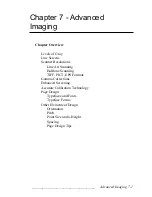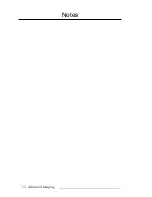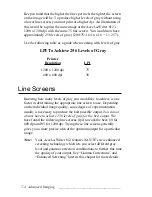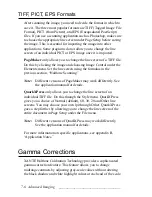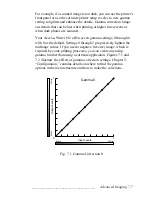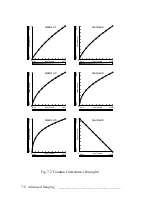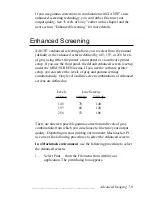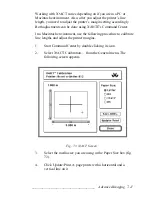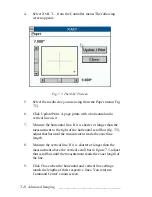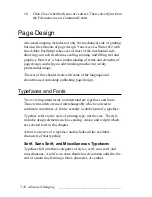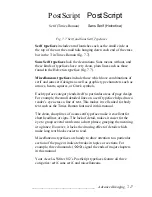
____________________________________
Advanced Imaging 7-3
( )
2
+1
Introduction
To take full advantage of your Accel-a-Writer 812’s high resolution
and make your images look their best, it is important that you
understand levels of gray, line screens, scanner resolutions, and their
uses within specific applications.
The first half of this chapter explains what levels of gray and line
screens are and how to work with them to achieve the best possible
quality of output. It also covers scanning, selecting formats for your
files, and using gamma corrections, enhanced screening, and
XANTÉ Accurate Calibration Technology. The second half covers
terms and elements of page design with tips for adding finishing
touches for a truly professional image.
Levels of Gray
The resolution of a laser printer is measured in dots per inch (dpi).
The resolutions on your Accel-a-Writer 812 are 600 x 600 dpi and
1200 x 1200 dpi.
Generally speaking, the human eye can detect approximately 200
shades of gray in an image. This means that the higher the levels of
gray (number of shades) used to produce a halftone image, the
smoother the image looks during the transition of changing dot sizes.
The following simple formula can help you determine the shades of
gray used to produce an image:
dots per inch
lines per inch
For example, if you print at 600 x 600 dpi with a 75 line screen, the
image produced has 65 levels of gray (600/75 = 8; 8 x 8 + 1 = 65). If
you want more levels of gray at 600 dpi, the line screen or lines per
inch (lpi) has to be reduced.

